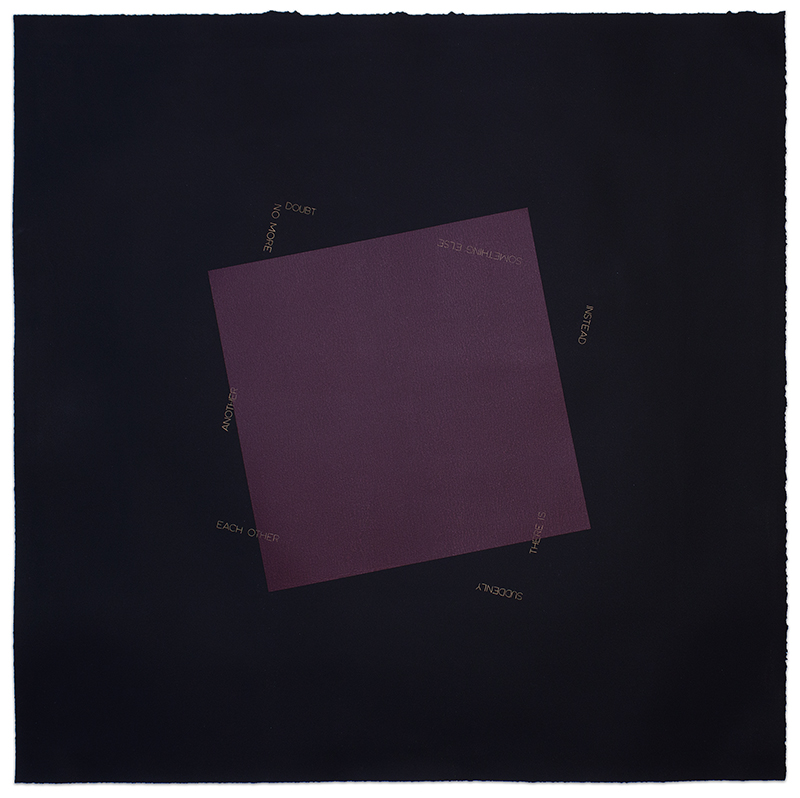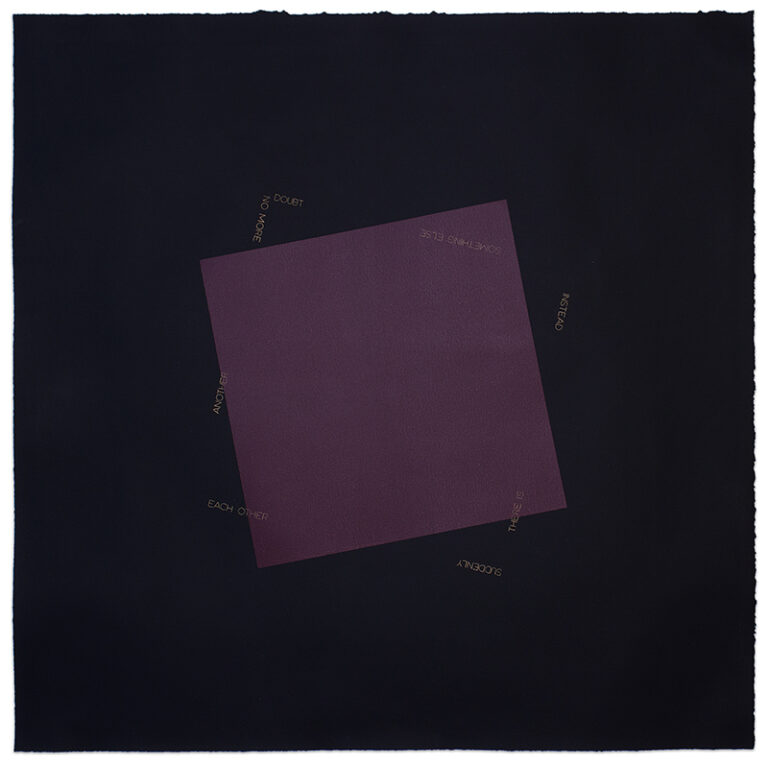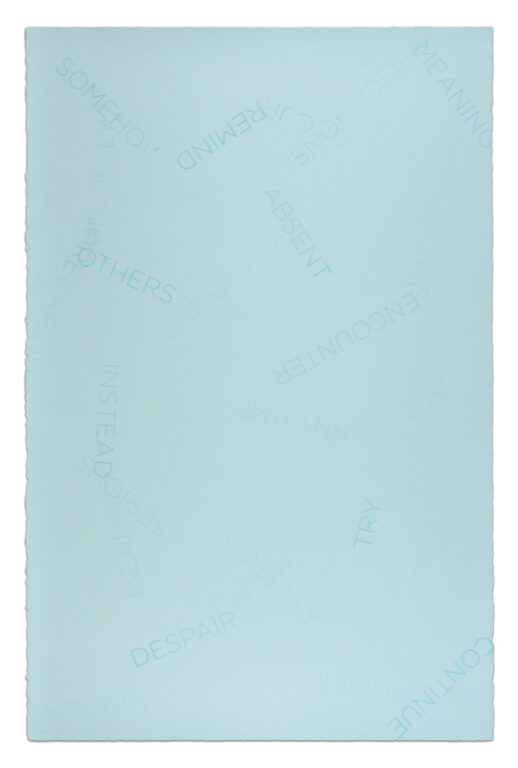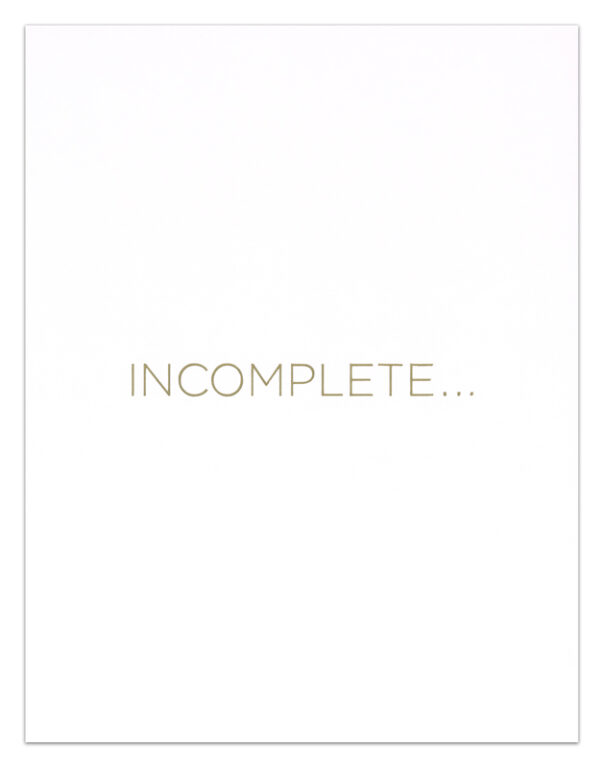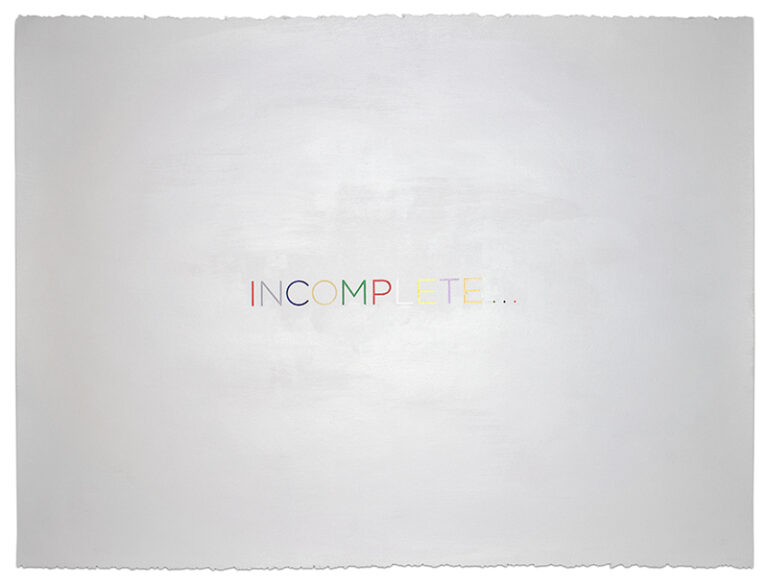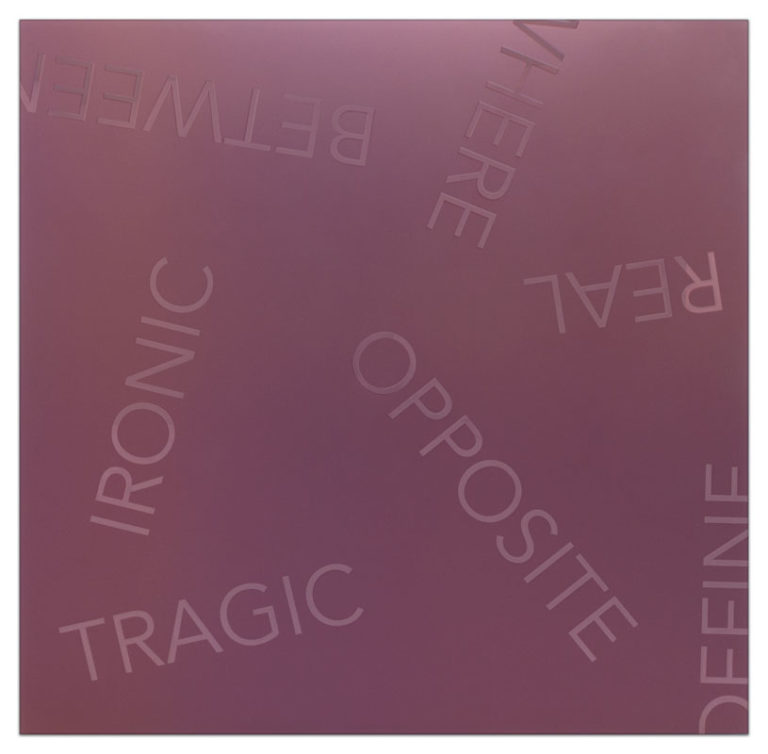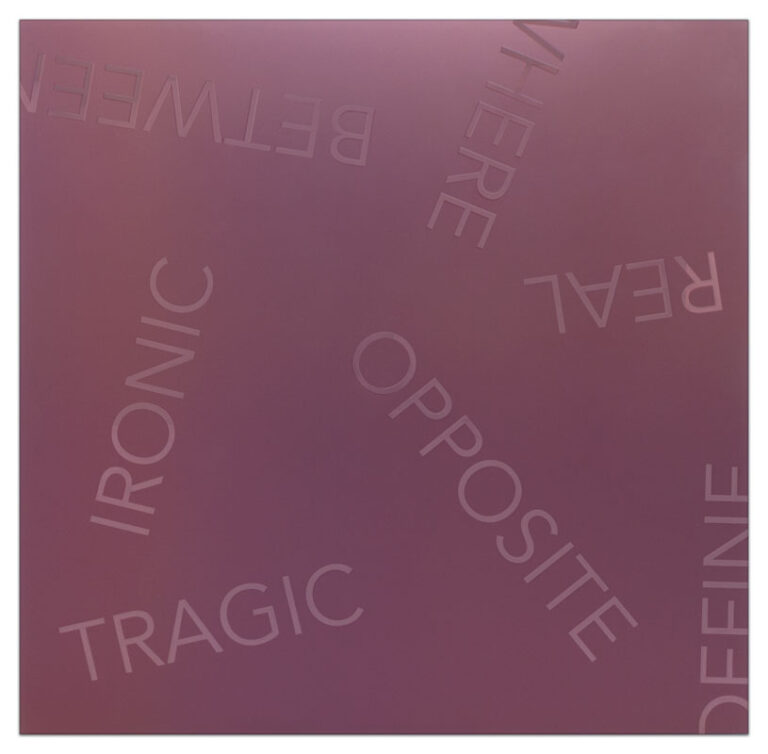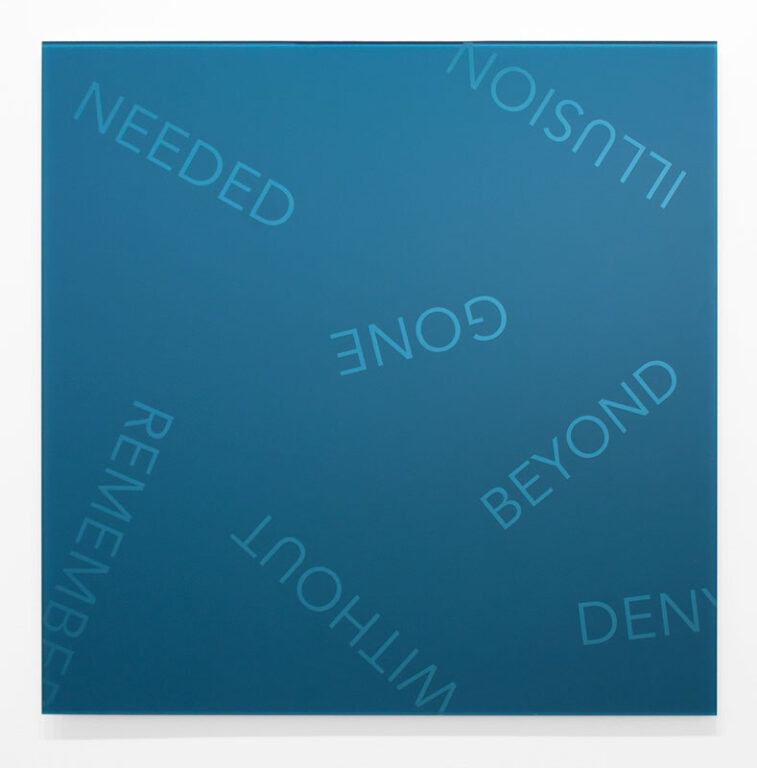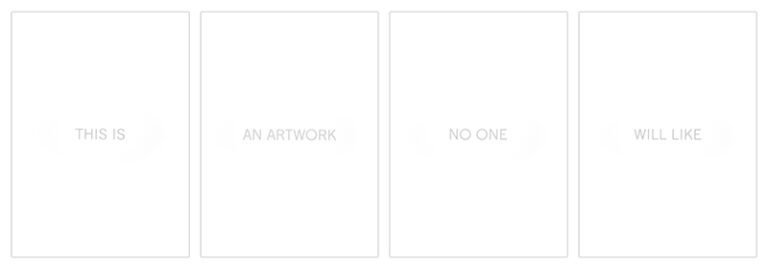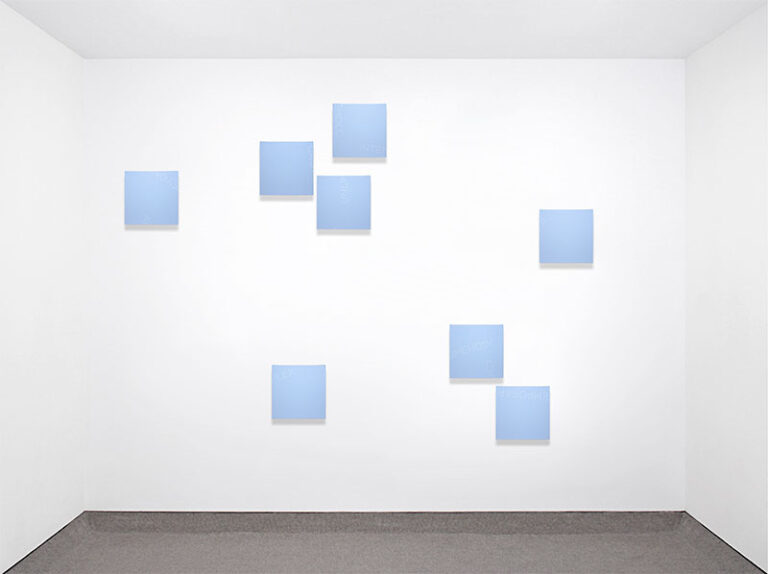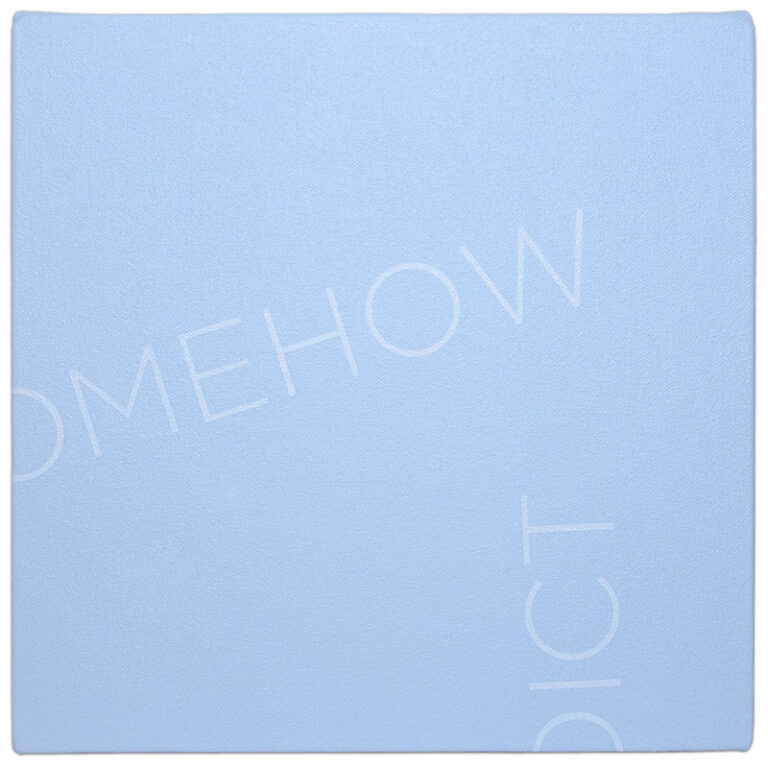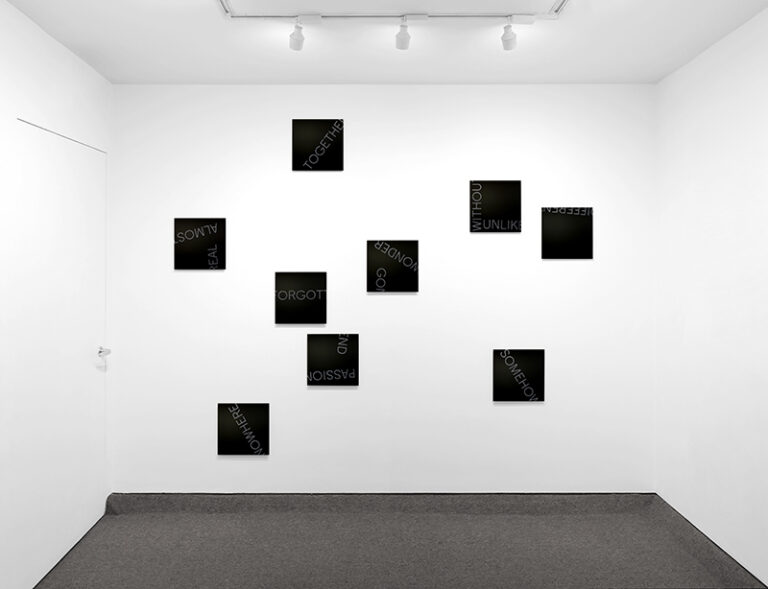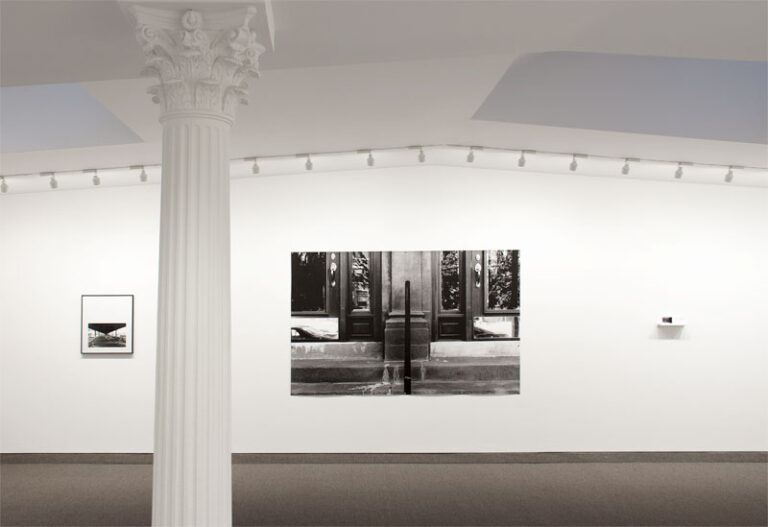Known as one of the founders of Conceptual Art, Robert Barry, in the 1960’s and 1970’s explored sound waves, barely visible string, releasing inert gas into the atmosphere and announcing that exhibitions would be closed. The projects engaged issues of audience involvement, perception, spatial relationships and art world structures. Early on, Barry used written language as art, counter-point and explanation for his work. The use of language soon became his ‘signature’ medium. Barry’s works are, in one sense, austere. Clean words and surfaces provide visual allure. Reading the chosen words provides an opportunity to get into the works and to better “read” the art. However, no defined references exist in the works. One must be willing to question and explore the potential connections, both for the artist, but more so for the viewer. Each of the formal decisions Barry makes provides opportunities for more specific readings of the work, yet there is no one narrative or reference to be made. How the artist makes work that is powerful to look at, captivating to read in their specificity, introspective to explore and yet wide open, is a big part of why the work is so strong.
The texts in the presented works have no one specific narrative or point of departure. Barry has dispersed the words across, over and beyond the surfaces. The arrangements, juxtapositions, and proximities of the words give further opportunity not only to read the words but to read INTO the words to think about what the relationships may be. In some, the reflective quality of the mirrors and mylar reflect imagery and colors in the space, as well as reversing, repeating and spotlighting various elements of the room. How much is on purpose and how much is open to chance is forever unknown. The known, the unknown and the grey area between are key to equally examine in Barry’s work. In order to do this, one must also equally examine the general, the personal and the universal.
Barry’s first solo museum exhibition was in 1971 at The Tate in London and over the years he has proceeded to have solo exhibitions at the Stedelijk in Amsterdam, the Folkwangmuseum Essen in Germany, the former Museum of Conceptual Art in San Francisco, the Musée St. Pierre, Art Contemporain in Lyon, France, the Haags Gemeentemuseum in Den Haag, Netherlands, the Dum Umeni Brno in the Czech Republic, and the Kunsthalle Nurnberg among others. Group exhibitions with Barry’s work have taken place at the Guggenheim Museum in New York, Seattle Art Museum, Jewish Museum, Kyoto Museum of Fine Arts, Museum of Modern Art in New York, among hundreds of others. His works are in the collections of the Whitney Museum of American Art, New York, NY, Van Abbemuseum, Eindhoven, Stedelijk Museum, Amsterdam, Panza Collection, Varese, Ludwig Collection, Cologne, Museum of Modern Art, New York, Hirshorn Museum and Sculpture Garden, Washington D.C., Musee National d’Art Moderne, Centre George Pompidou, Paris, Kunstmuseum Basel, Basel, National Gallery of Art, Washington, D.C., The Solomon R. Guggenheim Museum, New York, Museum für Monderne Kunst Frankfurt am Main, Frankfurt, Germany, Museum of Contemporary Art Los Angeles, Los Angeles, and the Musée d’Orsay, Paris, among many others.
